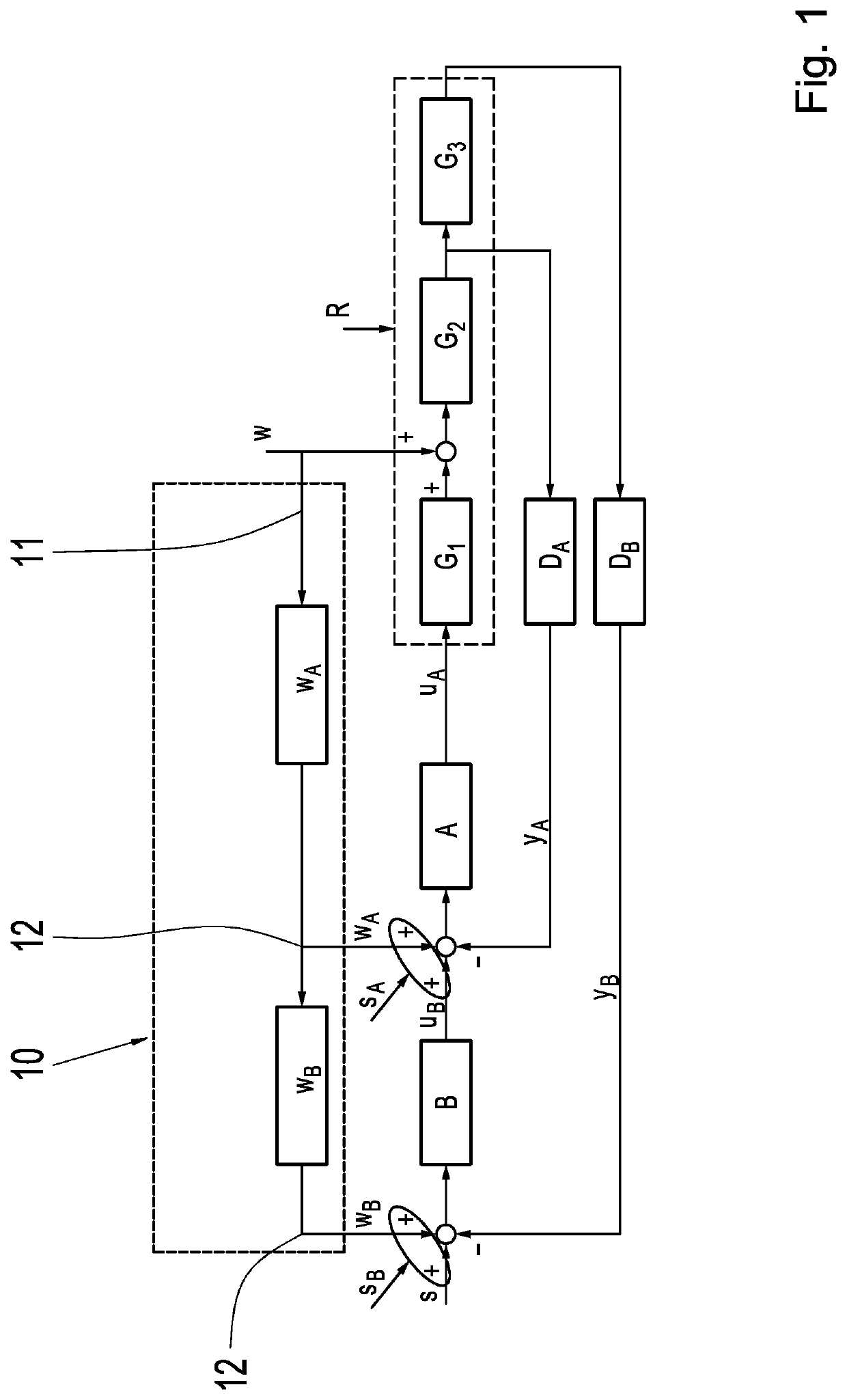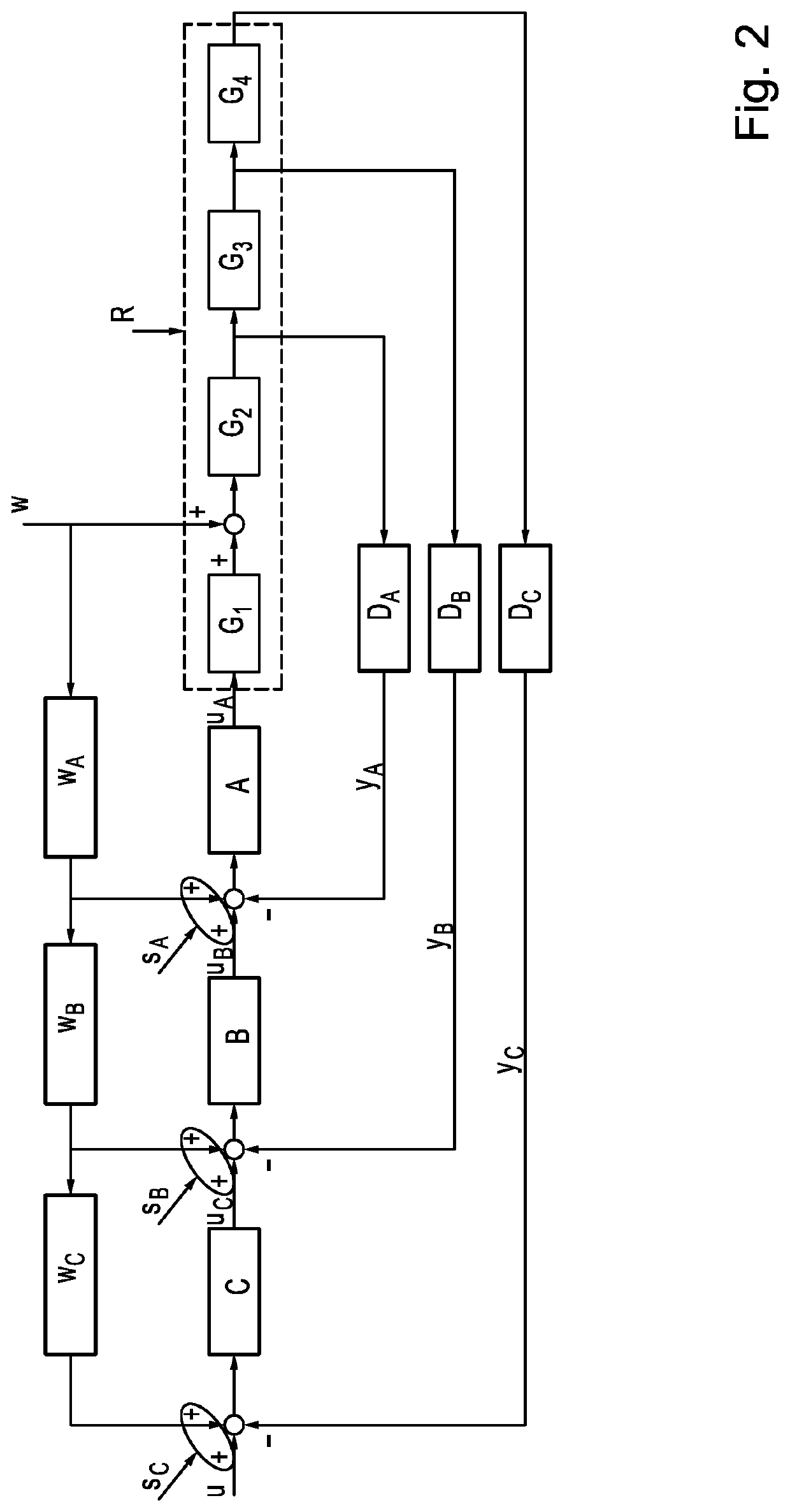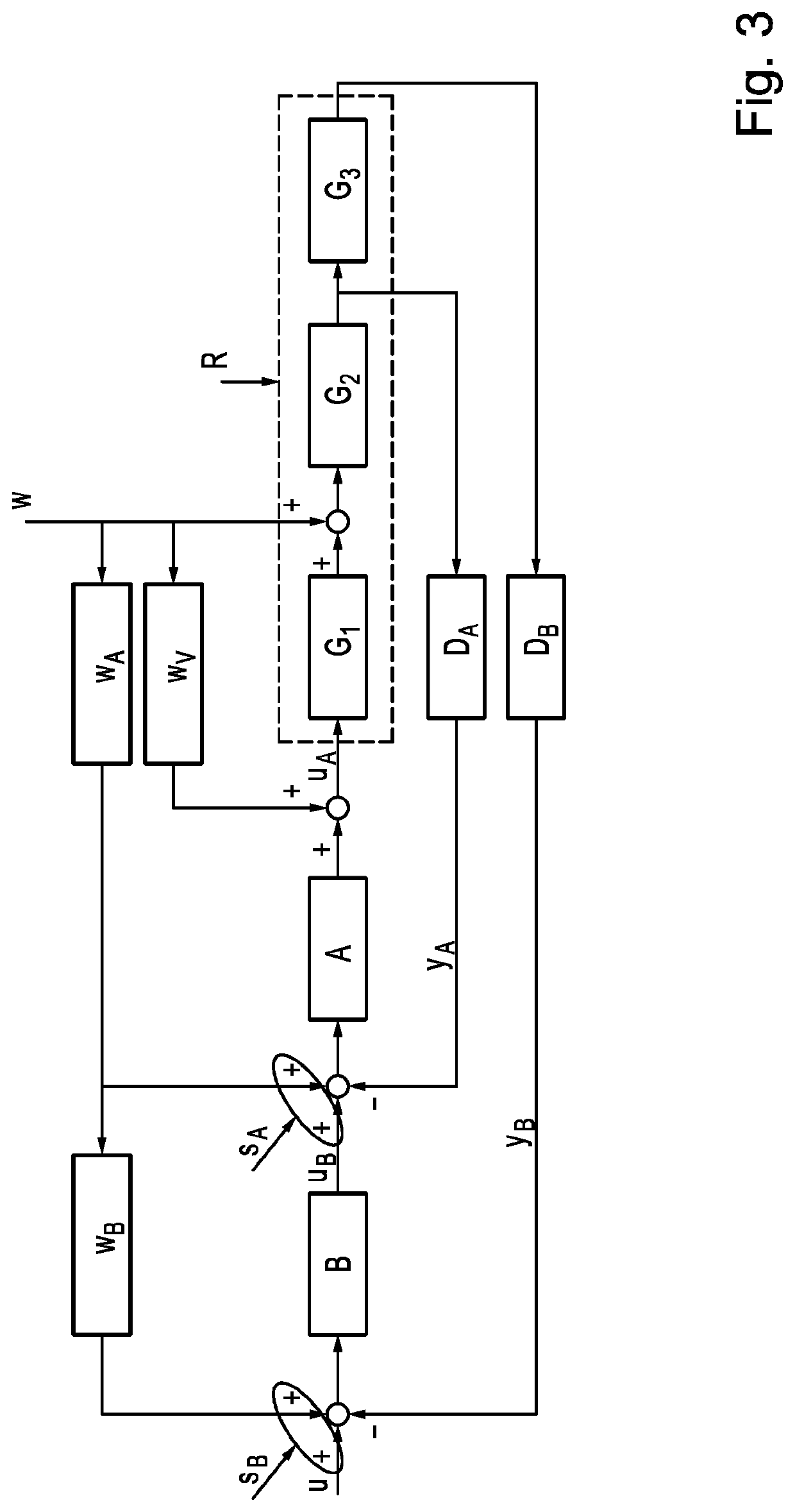Disturbance feedforward control in cascade regulation
a technology of cascade regulation and disturbance, applied in the direction of control devices, power driven steering, vehicle components, etc., can solve the problems of not providing driver intervention, ignoring driver intervention, and affecting the control performance of the cascade, so as to achieve the effect of not reducing the control performan
- Summary
- Abstract
- Description
- Claims
- Application Information
AI Technical Summary
Benefits of technology
Problems solved by technology
Method used
Image
Examples
Embodiment Construction
[0069]Identical reference symbols indicate identical objects or objects with the same function in the figures. Only the relevant objects are indicated with reference symbols in the figures, in order to avoid repetition.
[0070]FIG. 1 shows an evaluation device 10 in a cascade control. The cascade control comprises an inner first controller A and an outer second controller B. The first controller A and the second controller B regulate a control path R. The control path R comprises three components. The components are modeled as a first transfer function G1, a second transfer function G2, and a third transfer function G3. A transfer function G normally models the behavior of linear control circuit elements. The transfer function is obtained, for example, through the Laplace transformation or the z-transformation of the linear differential equations describing the system. The transfer function describes the input and output behaviors of a linear, time-invariant transfer system. In the ex...
PUM
 Login to View More
Login to View More Abstract
Description
Claims
Application Information
 Login to View More
Login to View More - R&D
- Intellectual Property
- Life Sciences
- Materials
- Tech Scout
- Unparalleled Data Quality
- Higher Quality Content
- 60% Fewer Hallucinations
Browse by: Latest US Patents, China's latest patents, Technical Efficacy Thesaurus, Application Domain, Technology Topic, Popular Technical Reports.
© 2025 PatSnap. All rights reserved.Legal|Privacy policy|Modern Slavery Act Transparency Statement|Sitemap|About US| Contact US: help@patsnap.com



